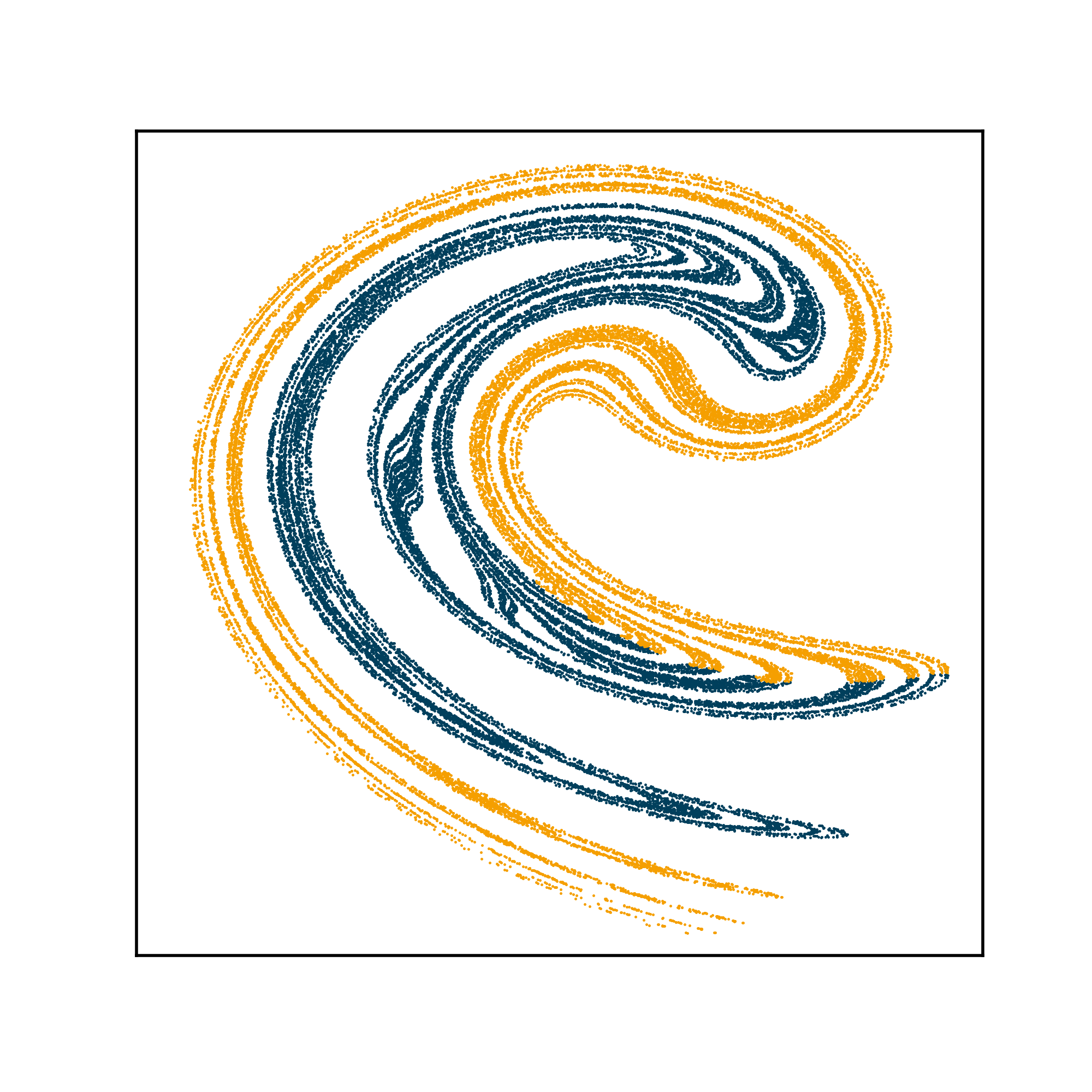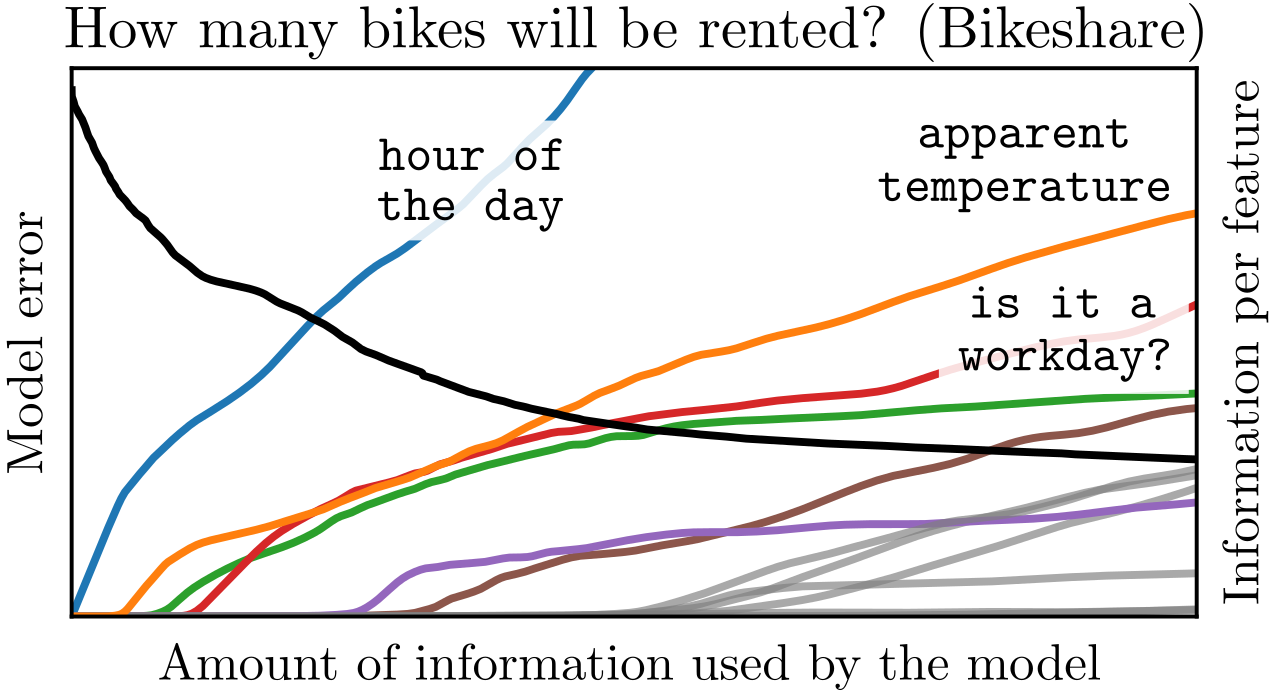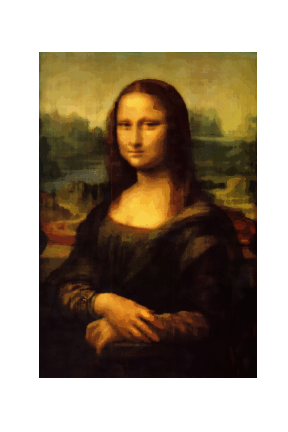Where is the information in data?
| Kieran A. Murphy | Dani S. Bassett |
University of Pennsylvania
How to decompose the information contained in data about a relationship between multiple variables, by using the Distributed Information Bottleneck as a novel form of interpretable machine learning.
New: Interactive tutorial (explorable) on decomposing information. Feedback appreciated!
| Papers | Code | Method overview |
Papers
 |
Machine-learning optimized measurements of chaotic dynamical systems via the information bottleneck
Physical Review Letters [PRL link] || [arxiv link] Selected as an Editors' Suggestion Featured in Penn Engineering Today |
| Information decomposition in complex systems via machine learning
PNAS 2024 [PNAS (open access)] || [arxiv link] | |
 |
Interpretability with full complexity by constraining feature information
ICLR 2023 [Conference proceedings link (OpenReview)] || [arxiv link] |
 |
Characterizing information loss in a chaotic double pendulum with the Information Bottleneck
NeurIPS 2022 workshop "Machine learning and the physical sciences" [arxiv link] Selected for oral presentation |
 |
The Distributed Information Bottleneck reveals the explanatory structure of complex systems
[arxiv link] |
Code
 |
Code is available on github! |
Method overview
TL;DR Introduce a penalty on information used about each component of the input. Now you can see where the important information is.
We are interested in the relationship between two random variables \(X\) and \(Y\), which we'll call the input and output. We assume \(X\) is composite: there are components \(\{X_i\}\) that are measured together, that can have arbitrarily complex interaction effects with respect to the outcome of \(Y\).
This setting is ubiquitous. Some examples we have investigated:
| \(\{X_i\}\) | \(Y\) |
|
|
Given data of \(X\) and \(Y\), the typical route a machine learning practitioner takes is to fit a deep neural network to predict \(Y\) given \(X\). The resulting model is incomprehensible, however, granting predictive power without insight.
What we propose is to add a penalty during training: the model has to pay for every bit of information used about any of the \(\{X_i\}\). This has two powerful consequences: 1) The most predictive information is found, revealing the essential parts of the relationship, and 2) We gain a means to control the amount of information used by the machine learning model, yielding a spectrum of approximate relationships that serves as a soft on-ramp to understanding the relationship between \(X\) and \(Y\).
Schematically it looks like the following:
Each component \(X_i\) is compressed independently of the rest by its own encoder. The amount of information in the encodings is penalized in the same way as a Variational Autoencoder (VAE). All encodings \(\{U_i\}\) are then aggregated and used to predict \(Y\).
We track the flow of information from the components by varying the information alloted to the machine learning model. Shown below is one example: a Boolean circuit with 10 binary inputs routing through various logic gates to produce the output \(Y\).
By training with the Distributed IB on input-output data we find the most informative input gate is number 3 (green), followed by number 10 (cyan), and so on. As more information is used by the machine learning model, its predictive power grows until it uses information from all 10 input gates.